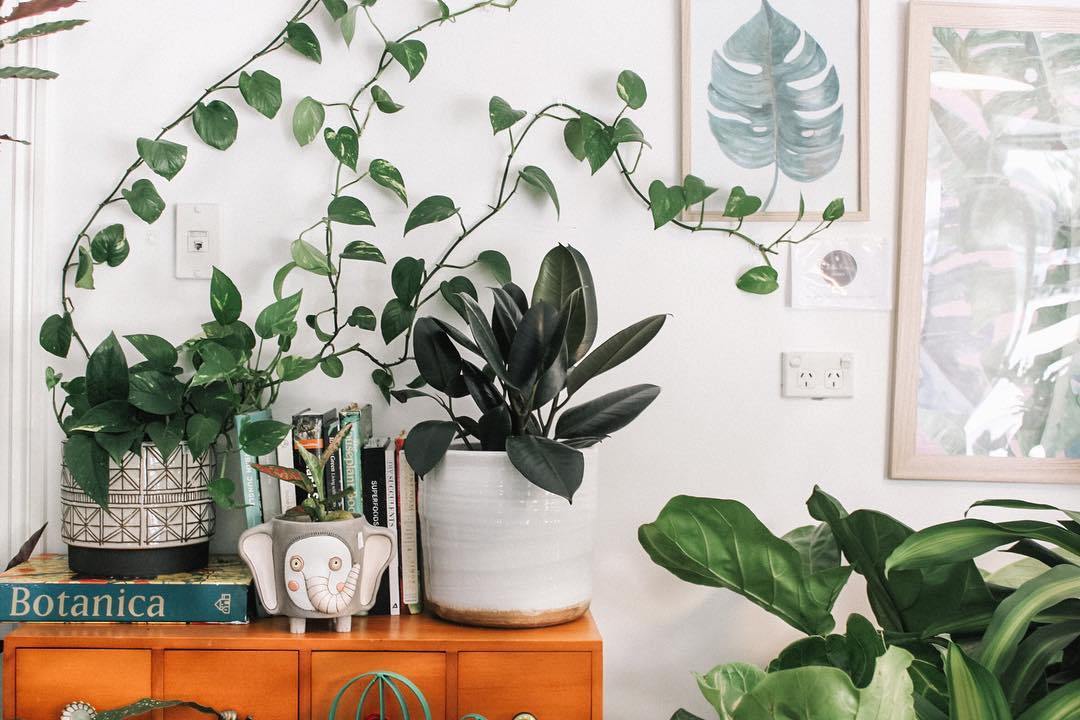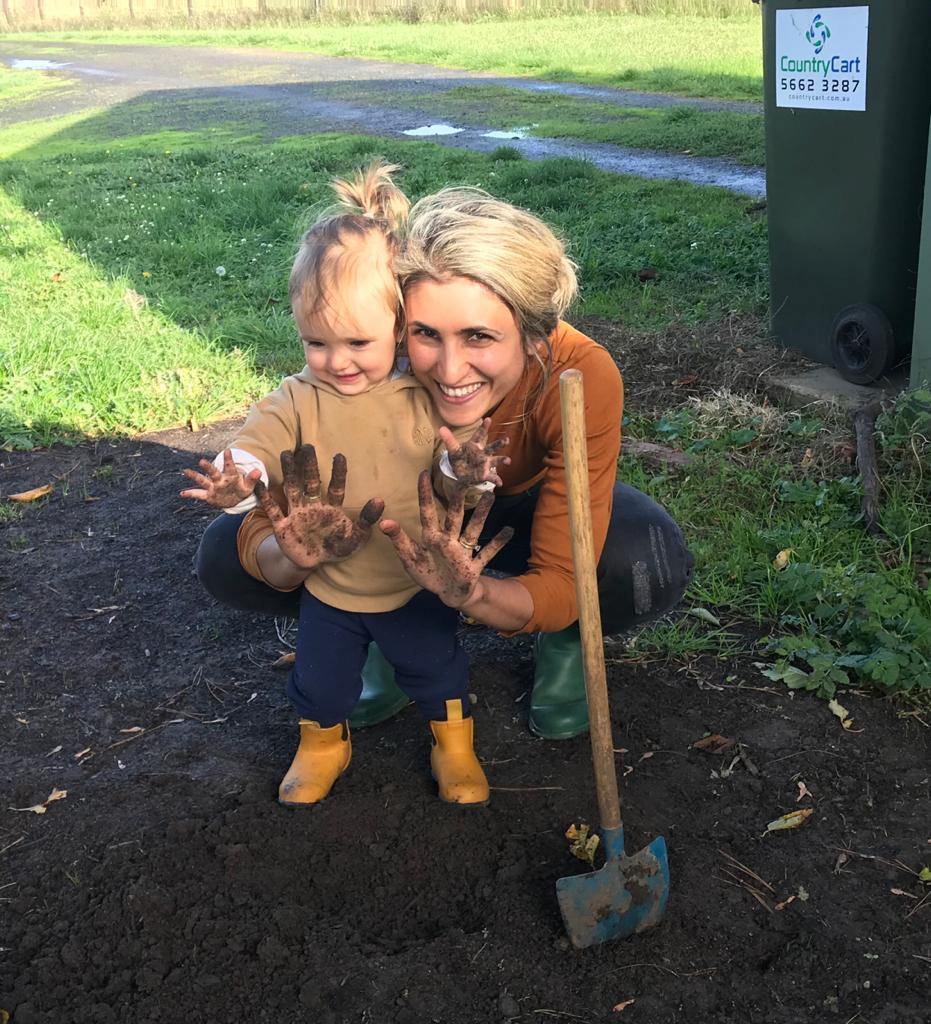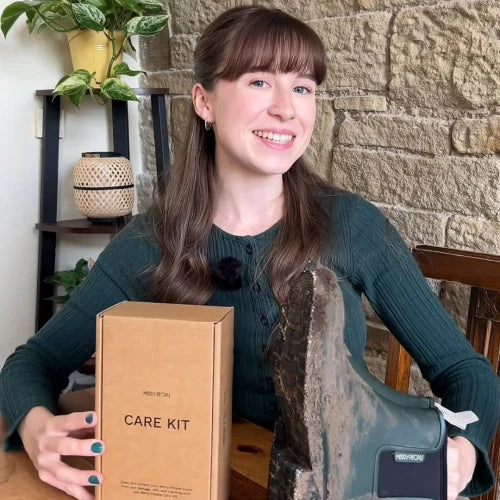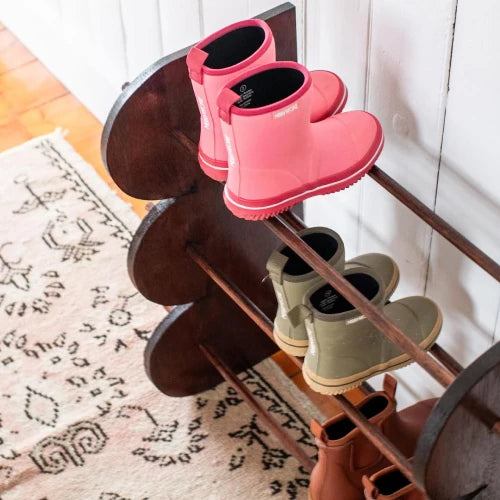How to Love Your Indoor Houseplants
Written with Alice Crowe, The Lush Forest
@lush_forest
Indoor plants are easily one of the top interior decorating trends of the last forever. If you are like me, it is all too tempting to gravitate towards a cute plant that matches the aesthetic of your home or your inspiration images. But, like an outdoor garden, indoor plants need love and care in order to thrive.
To learn more about how to love our indoor plant babies, we reached out to Dani’s cousin Alice Crowe. Alice runs the Lush Forest, an award-winning botanical design firm in Melbourne. She is a lifelong gardener and plant lover and holds a Master of Science (Botany). Alice has extensive experience with indoor plants and has also worked in a retail nursery and a large heritage garden. She has channeled this knowledge and passion into a merry career helping people reconnect with the joy and beauty of plants in urban spaces.
------
Bringing plants into your home is one of the easiest and most beautiful ways to reconnect to nature. They purify the air and add warmth to urban spaces. Indoor plants do, however, need a bit of care to ensure they thrive in your house.
At a basic level, there are a few key steps to caring for your indoor (and outdoor!) plants:
1. Get the right LIGHT
Light is fundamental to plants. Sunlight (or growing lights) allows the plant to undergo photosynthesis and convert light to energy. All plants have different requirements for light, with some plants need full direct sun, and others fine with soft filtered indoors.
When picking a plant and space inside, observe the light. Is there too much or too little? Is it aspect? Direct or indirect? How does the light change over the day and seasons? Then choose a species that is adapted to those conditions. Many plants that we grow indoors - Monsteras for instance - are rainforest understorey plants, which love bright, indirect light. If you can find those places in your home, those plants will thrive.
2. Care for the SOIL
Soil is the medium for delivering water, nutrients, and oxygen to your plant. So, when getting started with your new plant, make sure to use a good quality potting mix with a wetting agent and fertiliser.
One of the main problems indoor plants can have will relate to soil (and water) - is it hydrophobic and not absorbing water? Is it waterlogged? Is it draining properly? If you aren’t sure, don’t be afraid to get dirty and touch the soil to see how it feels and what it may need. If you still aren’t sure, most garden centers and hardware shops sell Moisture Meters which will tell you where the soil is at.
3. WATER your plant
Consistent watering is really important. Every plant is different, so make sure to read up on your plant’s watering needs. But, remember to always check the soil before you water! Watering rules are not sacrosanct and will vary depending on light, soil, size of the plant and time of year. As a general rule, if the soil feels moist still, don’t water your plant. Instead, wait a few days and check again.
Your plant may tell you what it needs, with symptoms of water mismanagement appearing in the leaves. As a rule of thumb:
But always look at the leaves in conjunction with checking your soil and lighting conditions before you take action.
4. FEED your plant
Just like humans, plants need to eat! They thrive on macronutrients of Nitrogen (N), Phosphorous (P), and Potassium (K). When planted in a smaller container indoors, there are fewer opportunities for these nutrients, so this is where fertilizer comes in. If you aren’t sure if your plant is hungry, a generic sign of nutrient deficiency is yellow spots on leaves.
Some general tips:
- Use a weak liquid fertilizer about once a month during the growing season (generally, AUS: October to February; USA April to Sept).
- Dilute to half strength, according to the packet instructions; or
- Alternatively, use slow-release pellets.
- Never fertilize a dehydrated plant or you may end up with “fertilizer burn” – make sure you water at least a few hours beforehand.
5. Look out for PESTS
As you water your plants, keep an eye out for pests. If you do spot them, make sure to get them early! The most common houseplant pests are:
|
Common Houseplant Pest |
Treatment |
|
Scale |
Remove by hand and treat with pyrethrum or white oil |
|
Mealy Bug |
Wipe with methylated spirit |
|
Fungus Gnats |
Drench the soil with pyrethrum, and then allow the soil to dry a little. Treat weekly for 3-4 weeks or until eradicated |
Now that you have a handle on the basics of caring for your indoor plant, it is time to pick one!
Choosing a plant is a personal choice that will depend on the factors above and your interior aesthetic.
Some popular and hardy houseplants that we recommend include:
- Devils Ivy (Epipremnum aureum): a great hanging plant, Devil’s ivy likes filtered light or bright artificial light. It has pretty tolerant water needs and can handle a bit of neglect [editor’s note: I’ve tested this way too many times, it really is hardy]. Generally, water more when growing, then pare back over winter.
- Xanadu (Philodendron xanadu): this beautiful plant has large, lush waxy green leaves and thrives in subtropical climates. It likes bright, indirect light, moderate to high humidity, and needs moist soil.
- Rhipsalis (Rhipsalis): also known as mistletoe cactus, Rhipsalis like moderate filtered light, and some humidity. Generally, water more in summer and then pare back in winter.
At the end of the day, remember to have fun! I hope your plant brings you as much joy as they bring me.



Stay Merry everyone! xx
Enjoyed this? Read more about Outdoor Gardening
[images via The Lush Forest]











